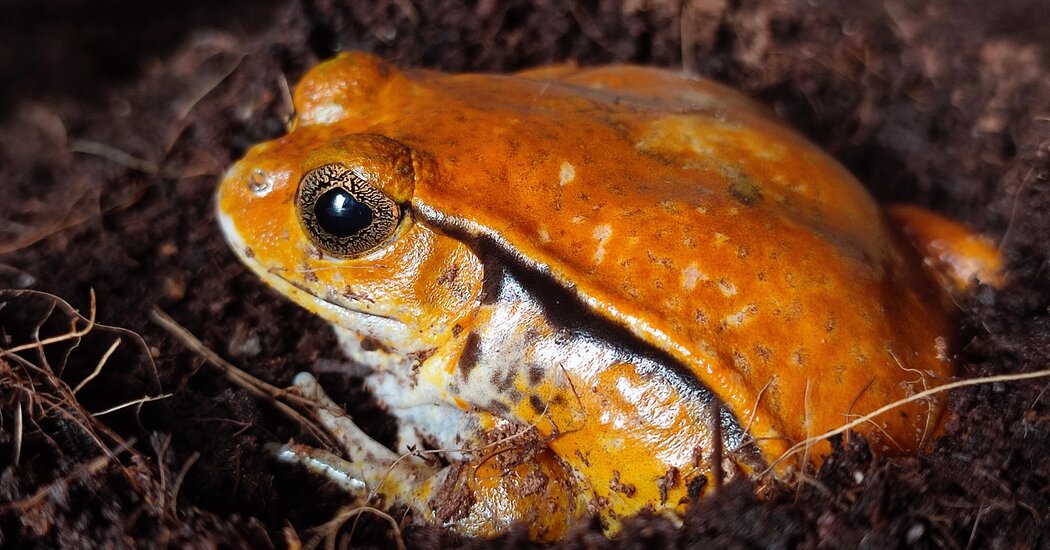You’ve heard of a “frog in your throat,” but probably not like this.
On a hike through a sweaty Peruvian jungle in 2016, Kim Roelants, a biologist at Vrije University Brussel in Belgium, caught a tree frog. As the large amphibian squirmed, the mucus it left on Dr. Roelants’s hands turned to glue.
“My fingers were just stuck to each other,” he said. “Before I knew it, both of my hands, my flashlight, everything was stuck.”
Similarly sticky secretions are found among other frogs as well as salamanders. The animals use this natural super glue to foil both predators and overcurious scientists. The mechanism behind this speedy adhesive — including how it evolved in unrelated amphibians — had been a mystery, Dr. Roelants said. In research published last month in Nature Communications, he and his team provided an answer: Noodle-like proteins found across the amphibian family tree have been adapted by a number of species to make their own fast-acting glue.
Many amphibians produce a layer of mucus over their skin. It keeps them moist and helps them breathe. And several, including common toads and more exotic, lethal species like poison dart frogs, secrete potent poisons to deter predators. But unfortunately, such poisons don’t always act quickly, leading to unhappy results for an attacked amphibian, Dr. Roelants said.
Amphibian glues, however, “work almost immediately,” Dr. Roelants said.
The stress of a bite “triggers the release of viscous fluid that rapidly solidifies,” added Shabnam Zaman, a doctoral student at Vrije University Brussel and an author of the study.
That’s bad news for anything with an appetite for amphibians.
“When an amphibian gets stuck in the mouth of a predator like a snake, that snake’s in trouble,” Dr. Roelants said. “At some point, you’ll see a snake decide this is going nowhere, give up and start trying to get rid of the frog.”
